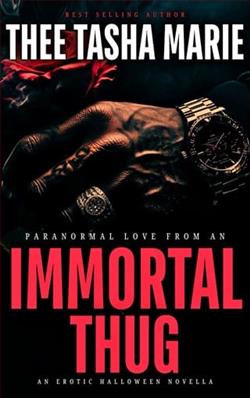Page 103 of The Dollmaker
“I’ve been through worse.”
They edged the stretcher past the piles, at one point catching several stacks of newspapers with the back wheel. In the center room, she saw the forensic tech shooting pictures of a recliner facing the lake.
“Dr.McGowan.” Dakota’s voice cut through her thoughts, making her stand a little straighter.
She tucked a loose strand of hair behind her ear. “Agent. I understand this is a possible overdose.”
His gaze held hers a beat. “No signs of trauma on the body, but there’s a note beside it that reads, ‘I’m sorry. I should have done more.’”
“Let’s have a look.” She moved around him toward the front of the recliner and hesitated a beat when she saw the note. Her gaze shifted to the man’s right shirtsleeve. The button was unfastened, whereas the left cuff was hooked. Rigor mortis had yet to set in, indicating he’d been dead less than an hour or two.
She pushed up the sleeve and saw the small pinprick at the bend in his arm. “Did you find a syringe?”
“No.”
“You checked behind him, in the seat cushions, and on the floor?”
“I did. Nothing.”
“Let’s have a look in his bedroom and medicine cabinet first,” Jerry said. “We might find it there.”
“I looked there,” Dakota said. “But you might see something I missed.”
When someone died, their home often gave clues to the cause of death. Drugs, high-fat foods, too many prescription meds, and alcohol were all predictors of death. It was a short list, but they made up 90 percent of the cases.
She wanted to find the syringe, which could prove he’d done this to himself.
In Knox’s bedroom, they discovered the bed quilt was rumpled but made, and judging by its looks, hadn’t been slept in for weeks. On the nightstand was a collection of pill bottles, including medications for his heart, diabetes, and his thyroid. Another set of pills helped him sleep.
“Guy was a walking pharmacy.” She pulled out her pad from her kit and catalogued the medications.
“All this would support an overdose.”
There were more prescription pills in the bathroom as well as a dozen over-the-counter cold and pain medications. In the kitchen she discovered a dozen frozen meals that had been cooked and their half-eaten containers tossed in the trash. Also in the trash were two large empty whiskey bottles. But no syringe.
“So what do you think?” The question came from Dakota, who stood at the kitchen door.
“I want to have a look at the body again,” Tessa said.
She moved past him and stood in front of Knox. Again her gaze was drawn to the right arm. She touched the mark. “Every detail about this guy suggests he wasn’t doing well. This needle mark is fresh. He could have injected himself, disposed of the needle, and sat back in his recliner to die.” She straightened and studied the disheveled mess around him. “But why worry about being tidy at this stage? Why not just sit in his favorite recliner, inject, and let it randomly fall?”
“Do you think someone killed him?” Dakota asked.
“I don’t know. But it bothers me we don’t have a syringe. We’ll have to run tox screens to see what’s still in his body.”
Dakota stood behind her, his body radiating energy. She looked at him. His jaw tensed, and his right hand was clenched at his side as he stared at the body. “Are you okay?”
“I’m fine.” He nodded toward the door. “Outside. Please.”
“Sure.”
She followed, and when they were away from the house, he said, “I interviewed Veronica Hayes this afternoon, and she thought Elena was staying at her family lake house. She wasn’t. Elena is still not answering her cell.”
Tessa glanced around to make sure no one could hear her. “Do you think this killer has taken her?”
“Yes. Veronica said Kara was wearing heavy makeup. Knox told Andrews if he cleaned her face, it was to protect my mother and stepfather.” His abrupt cadence hinted at his frustration over compromised evidence at his sister’s crime scene. “Veronica said he didn’t call for backup right away and he was arguing with someone on the phone.”
“Knox might have known who killed Kara?”















